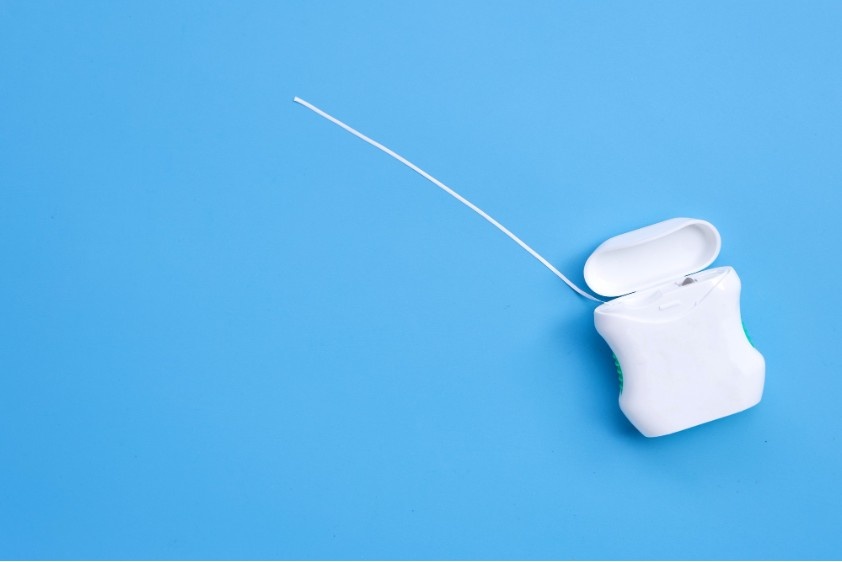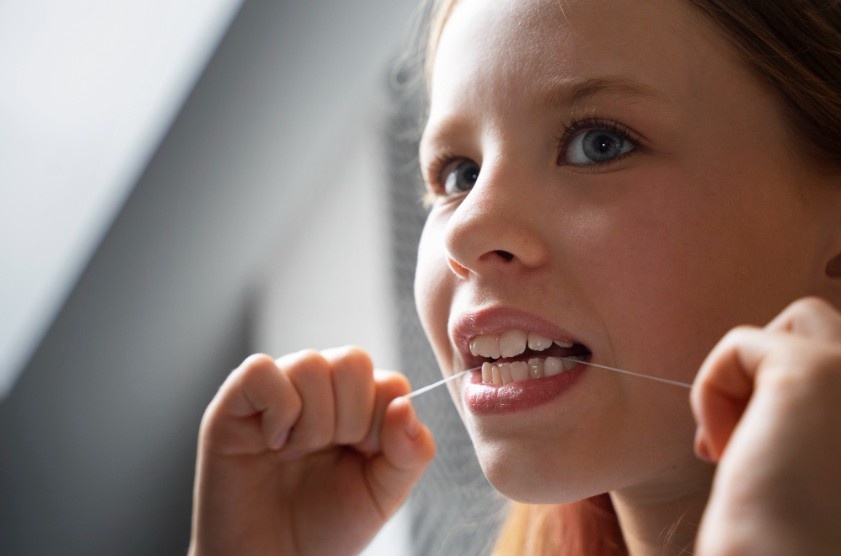When I first started my wellness journey, I was all about the basics—eating better, moving more, and sleeping well. But I always ignored one thing: flossing.
It wasn’t until a dentist visit left me with a deep lecture on gum health that I realized how important it was to my overall wellness. Flossing isn’t just about having fresh breath—it’s a key player in your oral hygiene routine.
So, how many times a day should you floss? Well, it’s not as simple as just “once” or “twice.” Flossing is something many of us overlook, but the right answer can change how you think about oral care—and your health.
Why Flossing Matters for Your Health
Before we dive into the specifics of how often you should floss, let’s talk about why flossing is so essential. It’s easy to think that brushing your teeth is enough, but flossing tackles an area your toothbrush simply can’t reach—the spaces between your teeth.
These areas are prone to plaque buildup and food particles that cause gum disease, cavities, and bad breath. Here’s what happens when you skip the floss:
- Plaque and Tartar Build-Up: Plaque builds up between your teeth and can harden into tartar if not removed. Tartar requires professional cleaning to remove, but plaque buildup can be avoided with regular flossing.
- Gum Disease: When plaque stays on your gums, it can lead to gingivitis and periodontal disease. These conditions can worsen over time, causing inflammation, bleeding gums, and, in extreme cases, tooth loss.
- Bad Breath: Let’s face it—no one wants to talk to someone with bad breath. Food particles trapped between your teeth can contribute to this, even after you brush.

How Often Should You Floss? The Ideal Routine
Now, let’s tackle the main question—how often should you floss? The American Dental Association (ADA) recommends flossing once a day. Yes, you read that right—just once a day is enough to keep your gums healthy and prevent cavities. But there’s a little more to it than that.
Why Once a Day Is Enough
You might be thinking, “Why can’t I just floss after every meal?” Well, while it’s not a bad idea, flossing once a day is typically sufficient for most people to maintain optimal gum health. Flossing more frequently can sometimes irritate your gums, especially if you’re using an aggressive technique.
The best time to floss is before brushing—this allows the toothpaste to reach all the areas you’ve just cleaned out with the floss. If you floss afterward, the plaque and food particles you removed will be disturbed and might reattach themselves.
When Is the Best Time to Floss?
Choosing the right time to floss is equally important. Here’s why:
- Morning vs. Night: Many people prefer flossing before bed, as it removes the day’s buildup of food and plaque. By doing it at night, you ensure your teeth are clean while you sleep, preventing overnight bacteria growth.
- Post-Meal Flossing: Flossing immediately after a meal can be beneficial if you’ve eaten something with lots of bits (think popcorn or fruit). But, the ADA still recommends flossing at least once a day and not overdoing it after every meal.
Does It Matter What Type of Floss You Use?
You might be surprised to learn that the type of floss you choose can also affect your routine. Not all floss is created equal. Here are a few options to consider:
1. Waxed Floss: This type is easier to slide between teeth and is great for people with tight spaces. It’s less likely to break or shred, making it ideal for beginners.
2. Unwaxed Floss: While it can be a bit harder to use, unwrapped floss does a better job of gripping onto plaque and food particles. It’s a good option for those who want a more thorough clean.
3. Floss Picks: Convenient for on-the-go use, but not ideal for deep cleaning. They can be effective in a pinch but should not replace traditional flossing for a thorough clean.
Ultimately, choose the one that feels comfortable for you—whether it’s traditional string floss, picks, or even a water flosser.
How to Floss Properly
It’s not just about the frequency—it’s also about how you floss. Flossing the right way will help maximize the benefits and protect your gums.
Here’s a step-by-step guide:
1. Use about 18 inches of floss: Wrap most of the floss around your middle fingers and leave about 2 inches for flossing.
2. Gently slide the floss between your teeth: Never snap or force it between your teeth as this can hurt your gums.
3. Form a C-shape around each tooth: Curve the floss around the base of each tooth, gently moving it up and down.
4. Be thorough but gentle: Make sure to floss along the sides of every tooth, including the back ones.
5. Don’t forget your molars: The back molars are often overlooked, but they are just as susceptible to plaque buildup as the front teeth.
FAQs On Flossing
1. How Long Should You Spend Flossing?
Aim for 2-3 minutes of flossing to thoroughly clean between all your teeth. Rushing through the process won’t remove as much debris, which can lead to buildup and potential gum issues.
2. How often should I floss if I have braces?
If you have braces, you may need to floss more frequently—ideally after every meal to ensure food doesn’t get trapped in your braces. You’ll want to use a floss threader or special orthodontic floss to get between the wires and brackets.
3. Can flossing cause gum damage?
Flossing is generally safe if done correctly. However, aggressive flossing or using the wrong technique can damage your gums. If your gums bleed regularly or hurt after flossing, you might be flossing too hard. Try a gentler approach.
4. Is it okay to skip flossing sometimes?
While skipping a day here and there isn’t the end of the world, it’s important to floss consistently. Daily flossing is key to preventing plaque buildup and maintaining healthy gums.
5. Can I use a water flosser instead of traditional floss?
A water flosser can be a good supplement to regular flossing, especially for people with braces or implants. However, it doesn’t remove plaque as effectively as traditional floss, so it’s best to use both.
Let’s Keep Those Gums Happy!
Flossing once a day is all you need to keep your gums and teeth healthy. Whether you choose to floss in the morning or before bed, the key is consistency and technique. So, grab your floss, take a couple of minutes, and give your teeth the care they deserve!
Tip: Make flossing a part of your routine by setting a reminder on your phone or incorporating it into your nighttime ritual. Your teeth will thank you in the long run!







